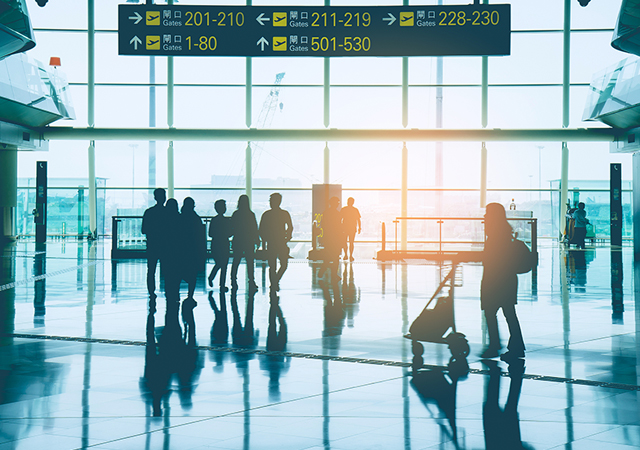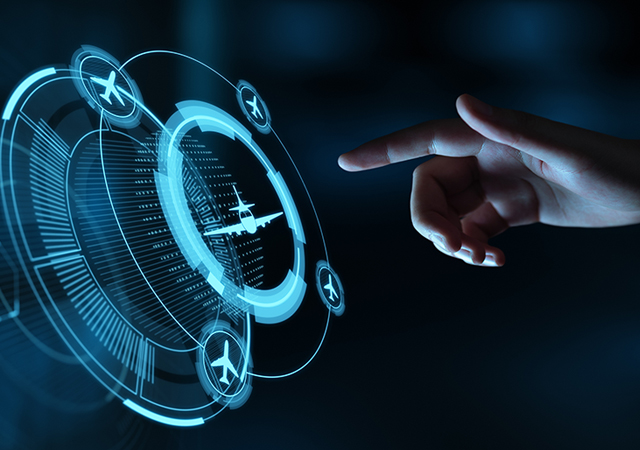
 Image by Wittayayut - BigStock
Image by Wittayayut - BigStock
It is now more critical than ever for the aviation industry to recognise the risks and opportunities presented by sustainability and the energy transition in order to safeguard its long-term viability and resilience. Aviation accounts for a relatively small share of global emissions, but is one of the most challenging sectors to decarbonise. Nevertheless, the global industry has committed to achieving net-zero emissions by 2050, according to report by Charles Sincock, ESG Advisory and Strategy Lead, Marsh Advisory.
LIFT OFF
The aviation sector's low-carbon transition must be understood in the context of its growth trajectory. Demand for air travel continues to rise, driving growth in the global fleet and the industry's absolute emissions. Much of this future growth is expected to come from emerging markets in Asia and Africa, where rapid economic growth and urbanization are driving a significant increase in air travel demand, said Sincock in the report.
While this growth presents significant opportunities for airlines, airports, aircraft manufacturers, and aviation finance providers, it is imperative that growth strategies factor in the evolving sustainability risk environment. Investors, lenders, and insurers are increasingly viewing sustainability as integral to financial risk assessment and capital allocation decisions. Sustainability concerns will likely play a greater role in driving investment decisions, with the potential to act as a powerful lever to accelerate the aviation industry's net-zero ambitions. Equally, many analysts predict sustainability issues becoming a more important factor in consumers' decision-making, including in terms of their travel choices and airline preferences, said Sincock.
HOW AIRLINES ARE APPROACHING SUSTAINABILITY
A key challenge for the aviation sector will be ensuring it can facilitate travel and societal needs while minimizing environmental impact. Some countries have already introduced legislation banning short-haul flights where feasible train alternatives exist, and more are expected to follow suit. However, much of the growth in air travel demand is in emerging markets that are typically larger and more sparsely populated than established markets, presenting an additional challenge as long-haul flights are considered harder to decarbonize, reported Sincock.
Sustainable aviation fuel (SAF) is likely to be the primary driver of emissions reduction for long-haul flights through 2050, with hydrogen and electric power expected to have a limited role. Yet, despite new production facilities and billions in investment, there is not nearly enough SAF to reduce rising emissions from increasing air travel. Furthermore, SAF currently bears a higher cost than traditional jet fuel, which remains a barrier to boosting SAF blend rates in the near term.
HOW AIRPORTS ARE APPROACHING SUSTAINABILITY
Though airports are directly responsible for just 2% of the aviation industry's overall emissions, they will have an important role to play in facilitating the decarbonization of the wider sector. This includes embracing electrification and new infrastructure to support low-emission power sources. Airports' ability to maintain their social license to operate and grow in line with forecasted demand will depend on their ability to meet evolving passenger needs while prioritizing sustainability, stated Sincock.
REDUCING AVIATION’S CARBON FOOTPRINT
Reducing aviation's carbon footprint will depend on both successfully replacing traditional aviation fuels with lower carbon energy sources and improving the energy efficiency of aircraft. To reach emission reduction targets by 2050, the growth rate of SAF production will need to accelerate significantly from current projections. Developing other alternatives like electric or hydrogen-powered aircraft will also require substantial policy and fiscal support.
Efficiency improvements, such as using lighter materials, embracing circularity in manufacturing, and leveraging innovations like AI to optimize flight paths and ground operations, will be critical in reducing the industry's energy consumption and emissions profile. A combination of these decarbonization pathways will be required by passenger airlines, airport services, flight operations, and aerospace manufacturers, claimed Sincock.
SUSTAINABILITY HAS LANDED
Stabilizing emissions and reaching net zero by 2050 is dependent on the actions the industry takes now. Companies need to identify and quantify the impact climate change and the low-carbon transition will have on their businesses, while having a solid understanding of the evolving risk profile. Sustainability has landed as a top priority for the aviation industry, and navigating the risks and opportunities it presents will be essential for long-term viability and resilience, concluded Sincock.

